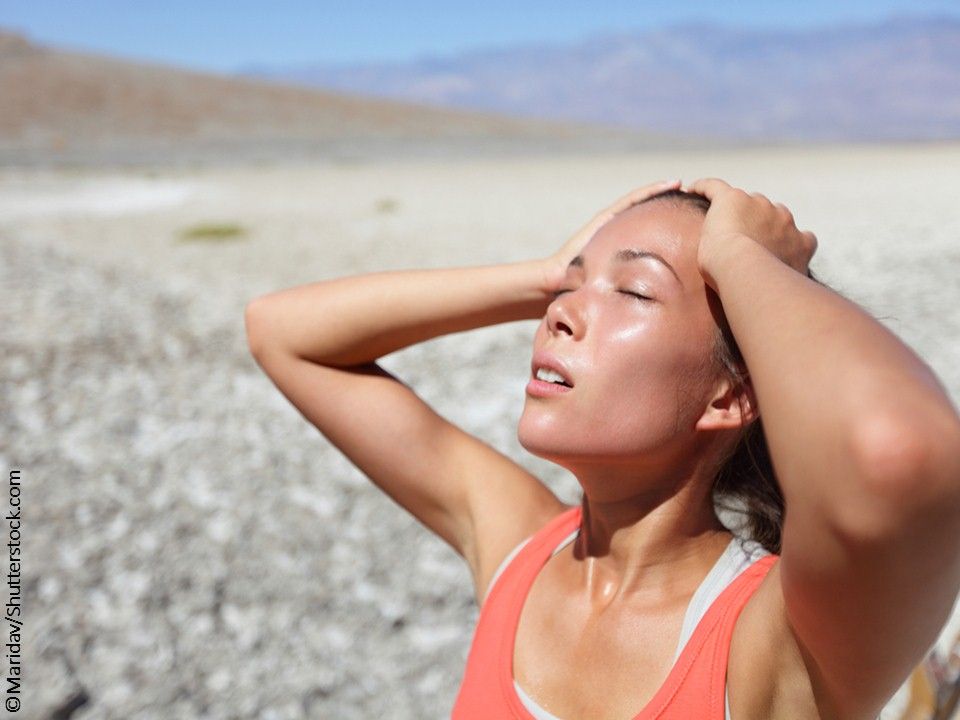© 2025 MJH Life Sciences™ , Patient Care Online – Primary Care News and Clinical Resources. All rights reserved.
7 Syndromes of Summer
Summer brings sunburn, chemical exposure, allergies, and heat-related ills. Catch up on recent research on some of the unpleasant syndromes of summer.
Summer invites exposure of all kinds--some can be fun but too much can be dangerous. While your patients plan to relax and take some time off during the summer season, take a few minutes of an office visit to discuss potential troubling summer syndromes and recommend moderation in all activities.
Click through the slides below for highlights of research findings specific to summer.

1. Having a Heat Wave: Extreme heat events (“heat waves”) have been linked with higher mortality, especially from respiratory and cardiovascular diseases. Now Brown University researchers estimate that if maximum daily temperatures in Rhode Island increase as projected, there will be 1.2% and 24.4% more all-cause and heat-related ED admissions, respectively, and 1.6% more deaths between April and October each year.

2. Summertime Is Melanoma Time: And a good time to remind patients to check for skin changes. Discuss the ABCDE rule that outlines warning signs of melanoma:
A symmetry: One half does not match the other half.
B order irregularity: The edges are ragged, notched, or blurred.
C olor: The pigmentation is not uniform.
D iameter: Melanomas are usually greater than 6 mm in diameter but can be smaller.
E volving: A mole or skin lesion that looks different from the rest or is changing in size, shape, or color.

3. Sun Avoidance Trumps Sunscreen: For nonmelanoma skin cancer, that is. When counseling patients who had previous NMSC, especially younger adults, physicians should emphasize sunburn prevention, according to the Johns Hopkins researchers who authored a population-based study. The focus should be on shade and sun avoidance over sunscreen, they advised.

4. Everybody Out of the Water:About 1 in 8 routine inspections of public swimming pools found safety problems so serious that the pool had to be closed immediately, according to a recent CDC report. Aquatic facility–associated illness and injury in the United States include disease outbreaks of infectious or chemical etiology, drowning, and pool chemical–associated health events (respiratory distress or burns).

5. Sodium Is a Hot Topic: The American Heart Association disputed findings in a Lancet article indicating that low sodium intake is related to a higher risk of heart disease and death. Excessive sodium in the diet can cause high blood pressure, which can lead to heart disease, stroke, and death, the AHA countered. Specific persons who should not lower sodium intake include those who regularly work in extreme heat and competitive athletes, the AHA notes.

6. A “Cold” When It’s Hot: Allergies are common not only in the spring and fall months but also in the summer, when the main triggers are grass pollens and mold spores. A “summer cold” may have symptoms similar to those of a real cold, but it’s caused by allergy rather than a virus. A sudden case of adult-onset allergies can be easily mistaken for a cold.

7. Early Detection Test for Lyme Season:Researchers saw a clinical need to improve the diagnostic specificity of early stage Lyme assays before the mounting of a robust serology response. Using a novel analyte harvesting nanotechnology, they evaluated urinary Borrelia Outer surface protein A (OspA) C-terminus peptide in early stage Lyme borreliosis before and after treatment. OspA urinary shedding was strongly linked to concurrent active symptoms (erythema migrans rash and arthritis).




